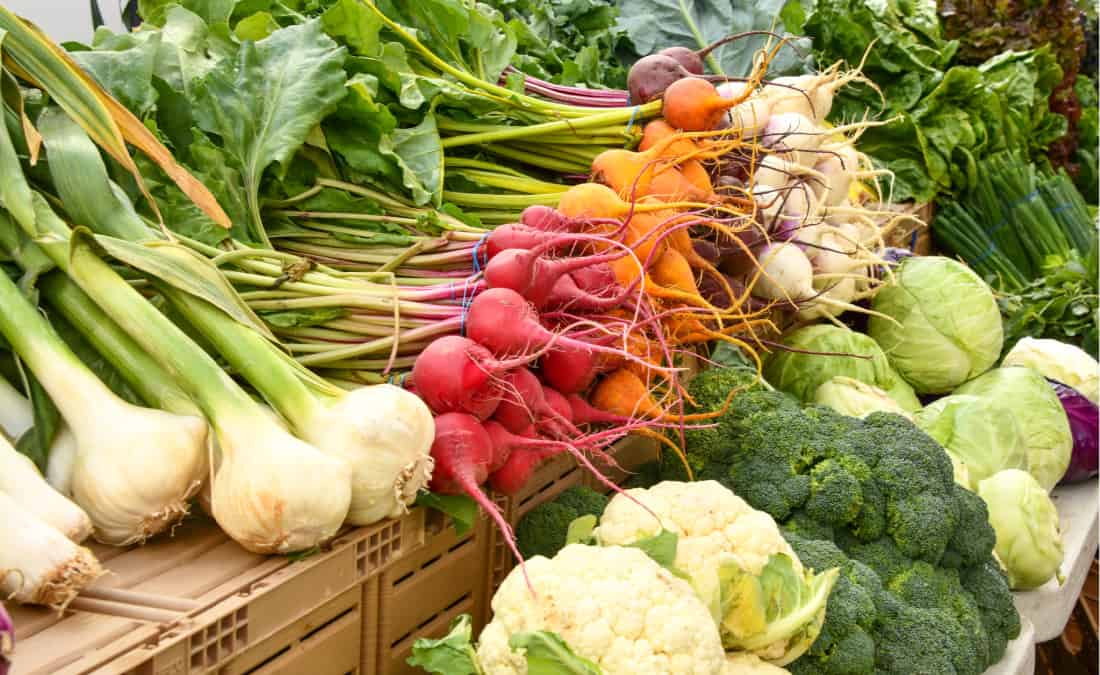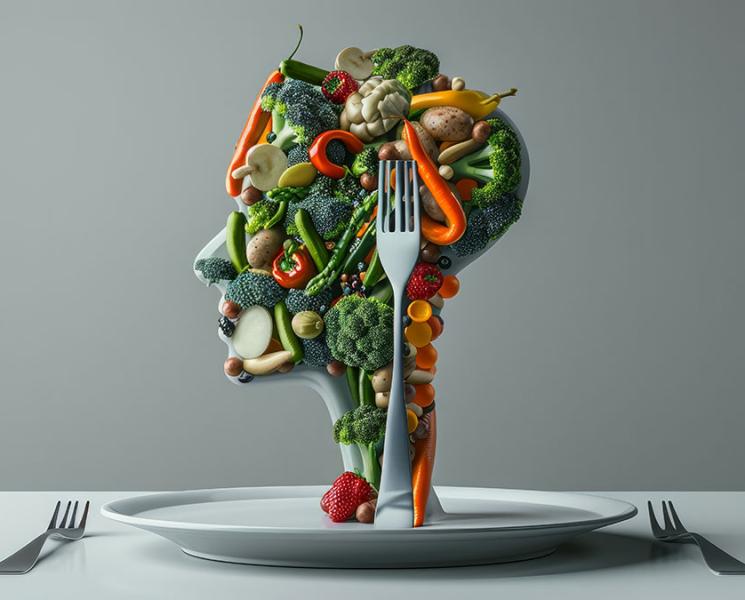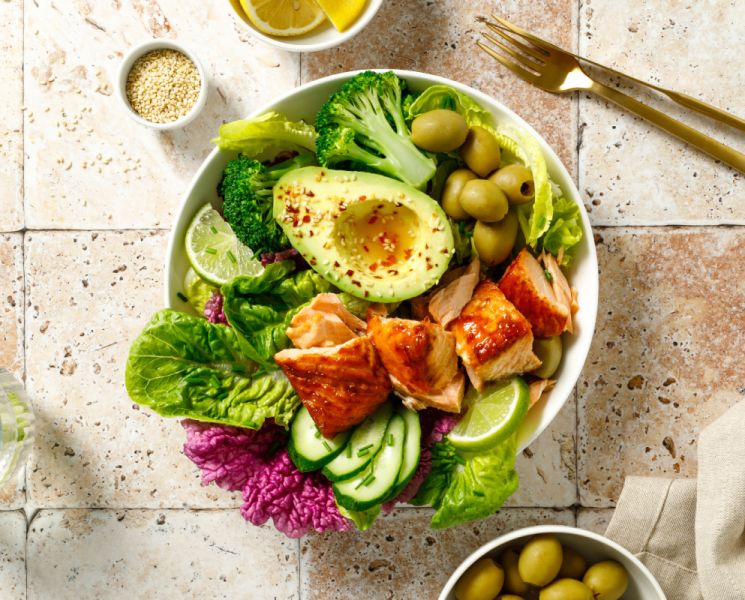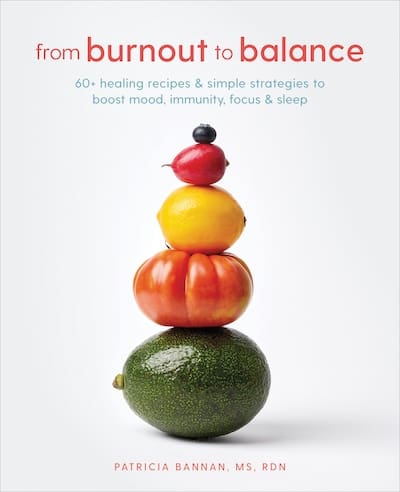Do you know how much sodium you eat each day? Chances are, you consume more than you think. Here are daily sodium recommendations with low-sodium foods to work into your meals.
Most Americans eat more than the recommended sodium intake of 2,300 mg a day. The recommendation of 2,300 mg of salt a day may sound like a lot until you realize how much is hidden in foods. Many food companies and restaurants add it to packaged, processed, and prepared foods to help preserve shelf life and enhance the taste. There are many other ways to enjoy food without loading it with salt. Here are more insights into the difference between salt and sodium, the current sodium recommendations, and healthy low sodium foods to enjoy.
Sodium vs. Salt: Clearing Up the Confusion
While we tend to use “sodium” and “salt” interchangeably, there are differences between them. Salt, or commonly used table salt, is a combination of sodium and chloride. Sodium is an essential mineral and is naturally occurring in many foods. When looking at food labels, you will see sodium listed, so it is easier to monitor than salt.
1 teaspoon of salt = 6 g of salt = ~2,400 mg of sodium
It is valuable to pay attention to the amount of sodium listed, as well as the amount of table salt you add to your foods. Consuming too much of either can raise your risk of health problems, including high blood pressure. For a better understanding of how much you should consume in a day, here’s a closer look at the recommendations.
How Much Sodium Should You Have in a Day?
On average, adults consume 3,400 mg of salt, children ages 6-10 consume 2,900 mg, and teens ages 14-19 consume 3,700mg. However, the Dietary Guidelines for Americans recommend limiting sodium intake to 2,300 mg per day.
Even if your blood pressure is normal, new research shows keeping your sodium intake low can help your arteries stay healthy and reduce your risk of developing heart disease or having a stroke sometime in the future. Need a more immediate reason to cut back? Too much salt can also cause you to retain water and feel bloated.
Foods with Hidden Sodium
A surprising 77 percent of your daily salt intake probably does not come from the shaker, but from processed foods. While you may think of foods like French fries and nuts as high in salt, processed foods often contain much more. You don’t notice it, because you don’t taste it the way you taste the salt on a handful of nuts or a couple of French fries. One ounce of roasted, salted nuts only has about 100 mg of sodium. But because the salt is on the outside of the nuts, it hits your taste buds first, giving you the salty flavor.
Example foods with hidden sodium include:
- Fast food items like burgers, chicken tenders, fries, and condiments
- Bread
- Canned and prepared soup at restaurants
- Vegetable juice
- Processed meats (deli meat, ham, bacon, etc.)
- Cheese, including cottage cheese
- Salad dressing
- Frozen prepared foods
- Sauces and condiments
How to Lower Your Sodium Intake
To lower your sodium intake, it’s valuable to get in the habit of reading the Nutrition Facts label on foods to check how much sodium they contain. Use the 2,300 mg sodium recommendation per day as your target to stay under.
In general, eating fewer processed foods and more fresh foods that are naturally low in sodium can make a big difference. If you do buy processed foods like soup, vegetable juice, and frozen dinners, look for low-sodium versions and cut back on the amount of condiments you use. Ketchup, mustard, relish, and salad dressings all contain sodium. Using a variety of spices and herbs can help add flavor to your food without the extra sodium your body doesn’t need. And remember, the taste for salt is learned. Once you get used to eating less, you won’t miss it. For ways to decrease your salt intake without compromising flavor, try this tasty list of my salt alternatives.
For more helpful tips, you can also take a look at the sodium infographics from the FDA on additional ways to lower your sodium intake, as well as specific language to look for on the label.

Healthy Low-Sodium Foods List
Here are some low-sodium foods to replace some of the higher sodium options with:
- Fresh fruit
- Dried fruit
- Fresh vegetables
- Low-sodium canned fruit or vegetables
- Dry peas, beans, or whole grains
- Low-sodium nuts, trail mix, and seeds
- Eggs
- Fresh or water-packed canned fish or poultry
- Low-sodium dips and dressings
- Milk and milk alternatives
- Yogurt
- Vinegar
- Healthy oils (olive oil, avocado oil, algae oil)
- Herbs and spices
One of the main benefits of cooking at home is that you are in charge of how much sodium makes its way into your foods. You can make lower-sodium versions of a lot of the typical higher sodium foods listed above, such as homemade soup, homemade pizza, homemade dressing with oil and vinegar, and more!
You can also opt to choose kosher or sea salt as both contain natural minerals and slightly less sodium content than regular table salt.
Getting Enough Sodium is Important Too
While consuming too much salt or sodium isn’t good for you, consuming less than 500 mg per day isn’t healthy either. Sodium works with potassium to help regulate fluid balance in the body. Sodium is also essential for proper nerve function, metabolizing proteins and carbohydrates, and maintaining the body’s acid/alkali balance, which is important for overall health.
Do you have any tips for reducing sodium in your diet? Please share, I’d love to hear!





